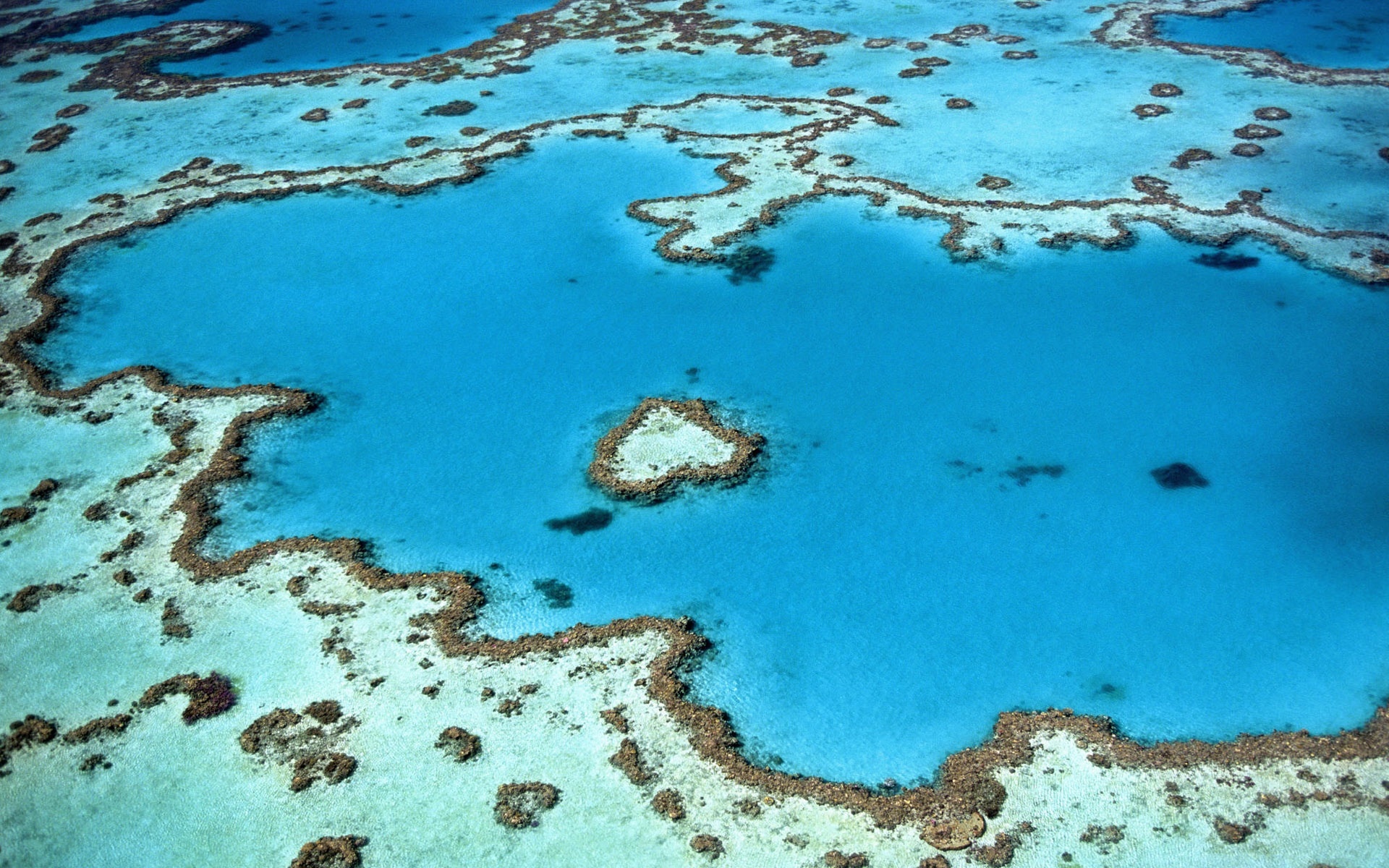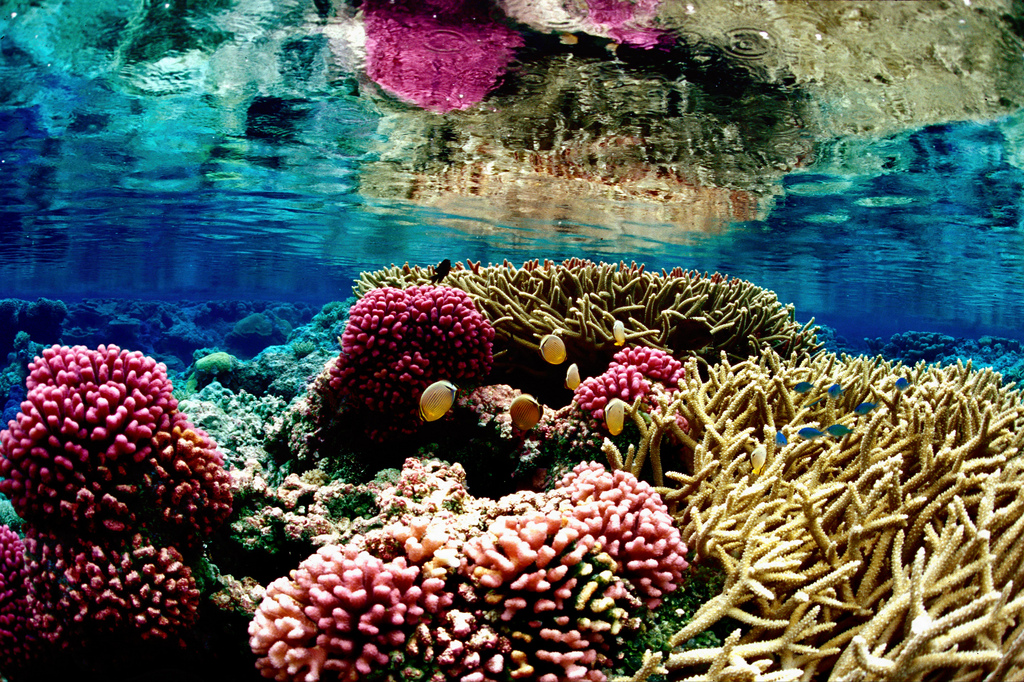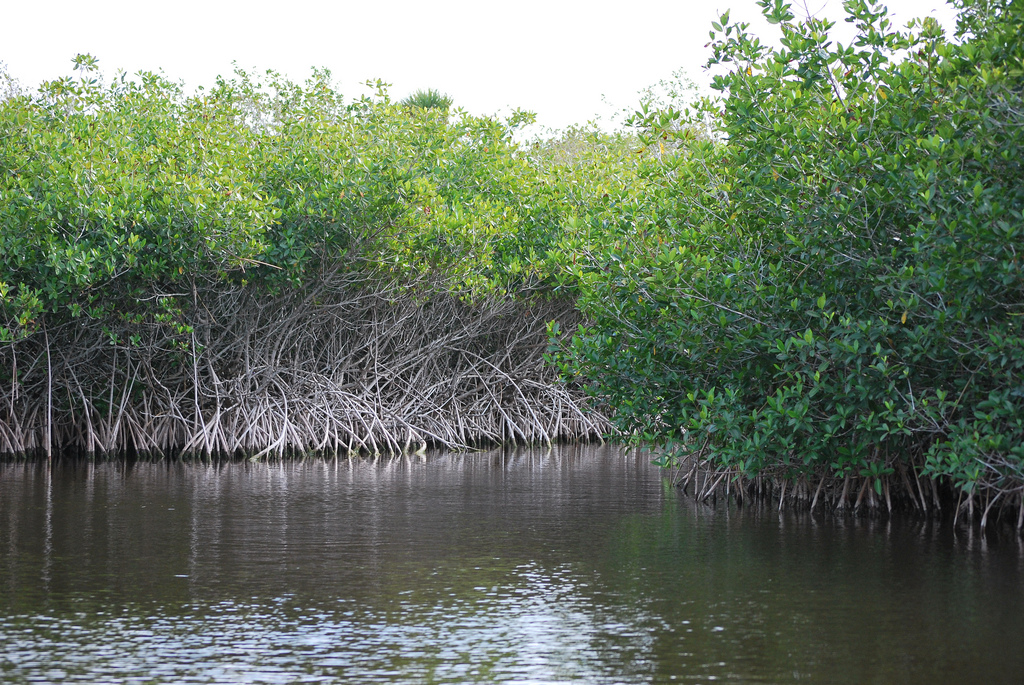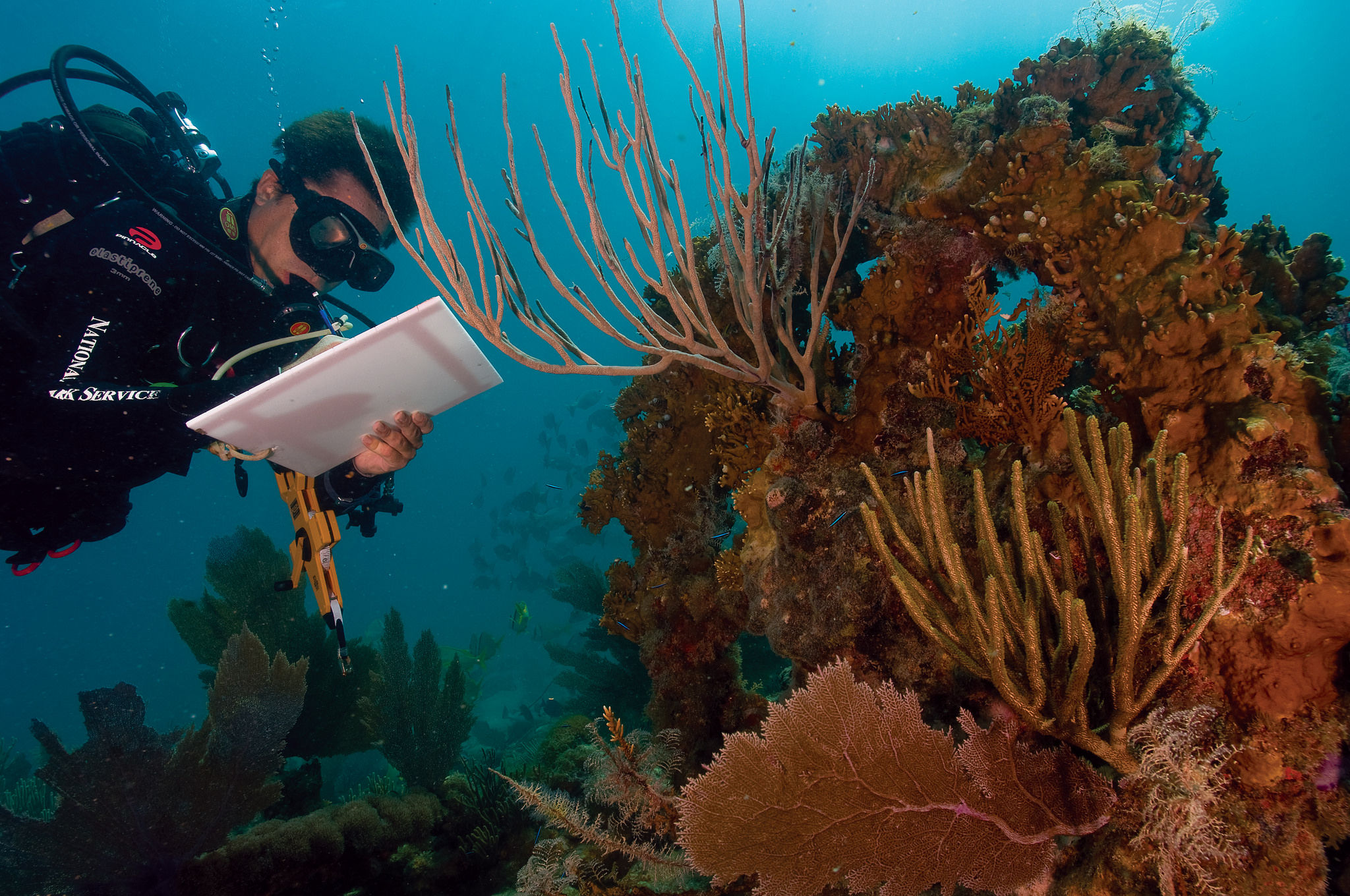Coral reefs, the most bio-diverse and productive ecosystems on the planet, are one of the most sensitive indicators of the ocean’s health. Even though they occupy only 0.1% of the ocean, they are home to a quarter of marine species. They have a global economic value of 30 billion USD and provide goods and services (fisheries, tourism, coastal protection, source of medical advance and cultural value) to 500 million people in 94 countries around the world. Coral reefs are also a source of newly developed medicines—more than half of the current cancer drug research uses marine organisms.
In spite of the significant role of coral reefs, only 46 percent of all coral reefs are considered to be in good health at the moment, while a fifth of all reefs have died and 60 percent are at risk to be destroyed. The biggest threat to the reefs is currently in South East Asia where 80 percent are in danger. Scientists are predicting that by 2050 all global coral ecosystems will be threatened.
Many environmental organizations and NGOs are increasingly concerned about the “health” of our ocean ecosystems. People as well as governments will have to make some very important decisions in the next few years in order to keep this incredible ecosystem alive. In order to do that they will first have to understand the main causes that are destroying the reefs.
 IN THE PHOTO: “Coral reefs are colonies of individual animals – polyps, which have tentacles to feed on plankton at night. They are also host to zooxanthellae – symbiotic algae that lives in their tissues and give them color. The algae nourishes the coral with oxygen, and organic products of photosynthesis. The coral uses these compounds to synthesize limestone with which it constructs its skeleton – the coral reef. This relationship can only exist in clear and shallow waters in tropical and subtropical regions.” Renee Cho. PHOTO CREDIT: Flickr/USFWS – Pacific Region
IN THE PHOTO: “Coral reefs are colonies of individual animals – polyps, which have tentacles to feed on plankton at night. They are also host to zooxanthellae – symbiotic algae that lives in their tissues and give them color. The algae nourishes the coral with oxygen, and organic products of photosynthesis. The coral uses these compounds to synthesize limestone with which it constructs its skeleton – the coral reef. This relationship can only exist in clear and shallow waters in tropical and subtropical regions.” Renee Cho. PHOTO CREDIT: Flickr/USFWS – Pacific Region
Main Causes For Coral Reef Destruction
Nature Communication conducted one of the longest studies on the topic and their conclusion was that widespread coral deaths are occurring due to a combination of local stressors (overfishing, nutrient pollution and pathogenic disease) as well as global warming (high ocean temperature, CO2). This year the decline of coral reefs has already reached catastrophic proportions and the ecosystem has become so weak, even small threats can cause the corals to die. Let`s look more closely at those main threats.
The Impact of Human Activities
One of the major human activities that contributes to coral reef damage is overfishing. In the natural, non-disturbed ecosystem, fish remove algae from the coral reefs, which helps them to get the sunlight they need to produce oxygen. They are an essential part of coral reef environment. Due to the high demand of fish consumption, the quantity of deep water commercial fish is decreasing. As a result, fisherman are starting to “hunt” in coral reef ecosystems. This is destroying reef ecosystems and causes the uncontrolled growth of algae – the main “predator” of the reefs.
Besides over-fishing, fishing companies are using destructive fishing methods, such as dynamite or cyanide which are breaking fragile coral reefs, depriving fish of their healthy environment. If those species will not be able to reproduce, the fishing industry will face global scarcity of their main source of income.
Another large human activity that is harming the coral reefs is unsustainable tourism. Many countries fully depend on the industry and allowed coastal cities to expand, destroying the coastal ecosystems and coral reefs without any concern. Currently many global coasts are full of unlimited construction projects. They are uncontrollably entering the ocean’s space, polluting it with the waste water or fresh water (coral reefs need a salty environment to develop) and causing further degradation of the reefs. Exceeding nutrients (nitrogen and phosphorus pollution) are causing algae to grow even faster since it thrives in a high nutrient environment. Algae blooms are suffocating corals and forcing fish to live in low nutrient ecosystems.
Related articles: “SDG 14: GROWING BLUE OCEANS“
“OCEANA CEO – ANDREW SHARPLESS INTERVIEW“
 IN THE PHOTO: Together with the extensive farming, constructions massively harm the Mangrove forests, one of the best natural protectors of the coastal waters. The trees are absorbing many sediments and nutrients created from farming and construction, but nowadays those forests are very hard to find. Without the natural protection, reefs are overflown with the sediment that deprives them of the sunlight it so desperately needs to survive. Besides all the mentioned stress with farming and construction, carelessness of the tourist, swimmers, divers and boat anchors makes the situation even worse. PHOTO CREDIT: Flickr/Pat (Cletch) Williams
IN THE PHOTO: Together with the extensive farming, constructions massively harm the Mangrove forests, one of the best natural protectors of the coastal waters. The trees are absorbing many sediments and nutrients created from farming and construction, but nowadays those forests are very hard to find. Without the natural protection, reefs are overflown with the sediment that deprives them of the sunlight it so desperately needs to survive. Besides all the mentioned stress with farming and construction, carelessness of the tourist, swimmers, divers and boat anchors makes the situation even worse. PHOTO CREDIT: Flickr/Pat (Cletch) Williams
I cannot go by without highlighting two very important factors, yet too often completely ignored, that also contribute to distortions of those precious ecosystems.
The global aquarium trade is making sure that the majority of aquariums are stocked with species caught from the wild. Their uncontrolled collection methods and unreliable shipping or transport cause too many corals to die.
Coral mining has also become extremely popular, especially in highly frequented touristic places, where reefs are taken from their natural ecosystem to be used as road-fills, bricks or even cement; some of them end up in tourist shops as well.
Climate Change
Ocean temperatures have been rapidly rising due to the heat absorbing power of the oceans. Oceans absorb 80 percent of the heat added to our climate system. This is changing conditions in coral reef ecosystems and corals are become pathogenic (more sensitive to bacteria). Higher ocean temperatures are speeding these processes even more. There is also an ongoing decrease in the PH of the oceans due to their uptake of the anthropogenic carbon dioxide from the atmosphere – this occurrence is called ocean acidification.
For a full mindmap containing additional related articles and photos, visit #coralreefs
Bleaching
Coral bleaching occurs when the symbionts between corals and their symbiotic zooxanthellae breaks down, resulting in the loss of the symbionts and a rapid whitening of the coral host (thus the term “bleaching”). This is a stress response by the coral host that can be caused by various factors, but more severe and frequent cases are caused by a rise in sea surface temperature. If the temperature decreases, the stressed coral can recover; if it persists, the affected colony can die.
The first record-breaking mass bleaching recorded by scientists appeared in the 1980s. Until 2016 only four mass bleachings reappeared (1982, 1987 and 1992) with the worst one in 1998 where 46 percent of all corals in the Western Indian Ocean were severely impacted or died. In the year 2005 sea surface in the Caribbean Sea reached the highest temperature ever reported and this year (2016) bleaching appeared in several parts of the world; with the worst one in Australia. Massive El Nino current affected almost 90% of coral reefs in the Great Barrier Reef.
 IN THE PHOTO:Recent research on the reef concluded that together with pollution and disease, bleaching has caused the death/dying state of half of the corals in the world. “This is the worst coral bleaching episode in Australia’s history, with reports of coral dying in places that we thought would be protected from rising temperatures.” said Professor Ove Hoegh-Guldberg, Director of the University of Queensland Global Change Institute, in a statement to the University of Queensland press. Australia will have to double its efforts to reduce the threats to the reefs and reevaluate the impact of mooted coal port expansion, agricultural run-off and climate change. PHOTO CREDIT: Flickr/Eco Cafe’ Phuket
IN THE PHOTO:Recent research on the reef concluded that together with pollution and disease, bleaching has caused the death/dying state of half of the corals in the world. “This is the worst coral bleaching episode in Australia’s history, with reports of coral dying in places that we thought would be protected from rising temperatures.” said Professor Ove Hoegh-Guldberg, Director of the University of Queensland Global Change Institute, in a statement to the University of Queensland press. Australia will have to double its efforts to reduce the threats to the reefs and reevaluate the impact of mooted coal port expansion, agricultural run-off and climate change. PHOTO CREDIT: Flickr/Eco Cafe’ Phuket
With each year the length of bleaching is getting longer, which means, that corals are dying even quicker.
What Can We Do To Minimize Human Impact On Coral Reefs?
In order to avoid massive bleaching in the future, governments will have to implement careful management of fishing and protection of water quality. If corals had better conditions and reduced human threats, they would be strong enough to fight the rising temperature in the ocean. Governments will have to encourage the population to choose seafood products, that come from certified, well-managed and sustainable fisheries. Education about the reefs will play a crucial role, especially at famous tourist spots. Controlled littering or disposing of unwanted items on beaches, in the sea, or near storm drains has to be mandatory.
More calls for the expansion of Marine Protected Areas (MPAs) will help fight for better fishing methods which are regulated and sustainable. Better management of coastal development, and the reduction of both land and marine-based pollution would tremendously help to keep the coral reef ecosystem healthy.
With the support and recommendations for comprehensive ecosystem management that includes all stakeholders, and stresses the need to invest in scientific research and educate the public about the importance of coral reefs, the ecosystem will have the possibility to recover. Moreover, national and international bodies, and all of us, need to address the threats of climate change by curbing carbon emissions.
 IN THE PHOTO: The Coral Restoration Foundation protects and restores coral reefs through creating coral nurseries and transplanting corals into degraded reef areas. Concerned individuals can adopt a coral through the Coral Restoration Foundation or a coral reef through the Nature Conservancy, which uses the funds to conduct research, promote marine conservation and support the creation of MPAs. MPAs, which are being created worldwide, protect biodiversity and help communities manage resources sustainably, PHOTO CREDIT: Flickr/NPS Climate Change Response
IN THE PHOTO: The Coral Restoration Foundation protects and restores coral reefs through creating coral nurseries and transplanting corals into degraded reef areas. Concerned individuals can adopt a coral through the Coral Restoration Foundation or a coral reef through the Nature Conservancy, which uses the funds to conduct research, promote marine conservation and support the creation of MPAs. MPAs, which are being created worldwide, protect biodiversity and help communities manage resources sustainably, PHOTO CREDIT: Flickr/NPS Climate Change Response
Urgent times call for urgent changes.
Too many times people fail to see the bigger picture and believe, that those things are not as serious as they seem at first. We keep forgetting how much we depend on the fragile natural ecosystems. If in the next few years major changes are not implemented in order to protect those ecosystems, all we will only be left with are the photos of the magical colorful underwater world that once was.
Recommended reading: “El NINO, POOR WATER MANAGEMENT AND CLIMATE CHANGE”














